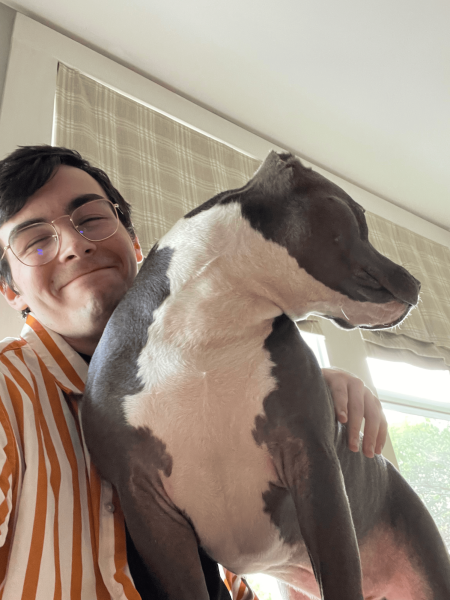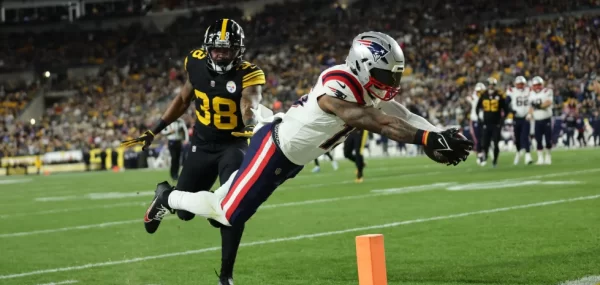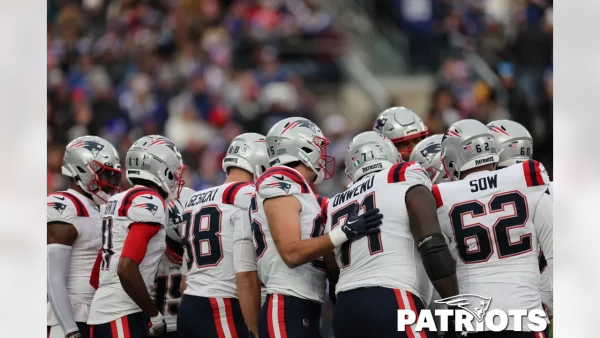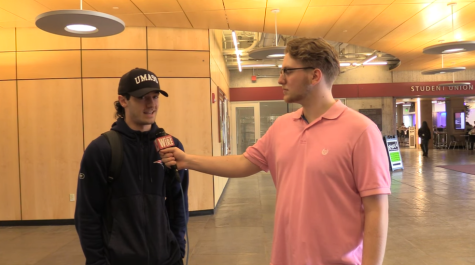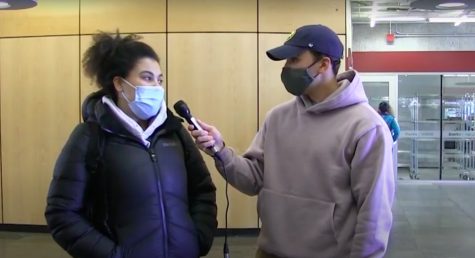- About
- Broadcast News
- COVID-19
- Current Affairs
- Entertainment
- Fashion
- Features
- Food/Health
- In-Depth
- International
- Investigative
- Lifestyle
- Multimedia
- News
- Opinion
- Podcasts
- Politics
- Profiles
- Relationships
- Showcase
- Student Life
- Submissions
- Technology
- Travel
- TV/Movies
- Video Games
- Voices
- WireTV
“Products of our time, reflections of ourselves”: UMCA exhibit displays Nicole Eisenman’s prints
A mix of lithographs, etchings, woodcuts, paper pulp prints and monotypes sits in the UMCA as artist Nicole Eisenman displays her norn-defying art to the public.
AMHERST – The University Museum of Contemporary Art (UMCA) at UMass Amherst currently features art by the internationally renowned artist Nicole Eisenman. It is the first UMCA exhibit open to the public since March 2020.
Eisenman, 56, is a French-born New York City artist known primarily for their work with oil paintings and sculptures. The UMCA exhibition, titled “Prince,” is the first to focus exclusively on their expressive prints. The 50-or-so works in the exhibition consist of a mix of lithographs, etchings, woodcuts, paper pulp prints and monotypes.
The exhibit’s website describes Eisenman’s work as “full of pathos and dark humor” and “critical observations of everyday life and culture.” Their art explores the human condition through cartoonish, surrealist, and vivid figures based on Eisenman, their friends, and everyday observations.
The artwork delves into themes of gender instability, environmental issues, queerness and politics. Their work is influenced clearly by Expressionism, Impressionism, and Pablo Picasso.
Girl With a Tear, a 2012 woodcut on paper, is a purple-hued depiction of a woman reminiscent of Picasso’s portraits. A tear falls out of the woman’s left eye, falling to her breasts. The woman has a shaved head, a wide nose, and thin lips, presumably a commentary on gender and beauty standards.
In a 2012 lithograph, Tea Party, three figures – a skeleton, a man in a tricorn hat, and a fat-cat capitalist – grasp onto an American flag hung on a scythe. It looks like a contemporary interpretation of an early political cartoon.
While most of Eisenman’s work is dark, moody, and earnest, certain pieces display fun and playful sides to their art. For instance, Untitled (Bird Love), a 2014 monotype, portrays an amusing scene of a bird and figure with big protruding eyes exchanging a kiss.
Faye Hirsh, a widely published editor and critic who has known Eisenman for 25 years, wrote an essay to accompany the exhibit. She comments that Eisenman uniquely pays homage to artists from the past while simultaneously paving their own path in printmaking.
“As much as Eisenman pays homage to her many idols from the past, there are surely few other artists alive today who can so effectively translate the dark comedy of a Beckmann cabaret into the foibles of a Williamsburg bar,” Hirsh says, “or transform the priapic heterosexuality of Picasso into a queer eroticism, or, more accurately, seize upon the master’s excesses as a license to represent those of [their] own life and milieu.”
Beer Garden, for instance, Eisenman’s largest etching they worked on between 2012-2017, plays with 1920s German Expressionist scenes of beer gardens. It depicts a collection of cartoonish figures, some naked, some clothed, kissing, chatting, and drinking. One figure sits reading a paper with the headline, “WHAT NEXT? DRONES OVER OCCUPY PROTEST,” suggesting a political commentary. In the foreground of the image, a large, curled hand holds a mug of beer, wherein a reflection of the drinker/artist can be seen.
Parallel to “Prince” is an exhibit curated from Five College collections titled “Slideshow: Nicole Eisenman’s Modernist Inspirations.” The exhibit features prints by other artists from the 20th century whose work has inspired Eisenman’s and/or provides an opportunity for discussion between modern and contemporary interpretations.
For example, Paul Cadmus’ etching Shore Leave (1935) displays a scene of off-duty sailors which “celebrates queer sexuality and impulsiveness,” per exhibit notes. The Kiss Dec 3rd, 1944 (1944) by Norman McLaren shows two elongated masculine heads kissing, nearly fused together. Another piece, Nude (1925), by Otto Dix pictures a naked woman, seemingly indifferent to the viewer’s gaze, from behind.
UMCA Executive Director Loretta Yarlow told the Daily Hampshire Gazette that Eisenman worked from 2011 to 2019 to create the collection of prints now on display at the UMCA. Eisenman worked with publishers and printing workshops in Brooklyn, New York, where they currently live and work.
Both exhibits will be open at the UMCA until Dec. 5 and again from Feb. 3 to May 1. There will also be a virtual live chat with Nicole Eisenman on Nov. 10.


